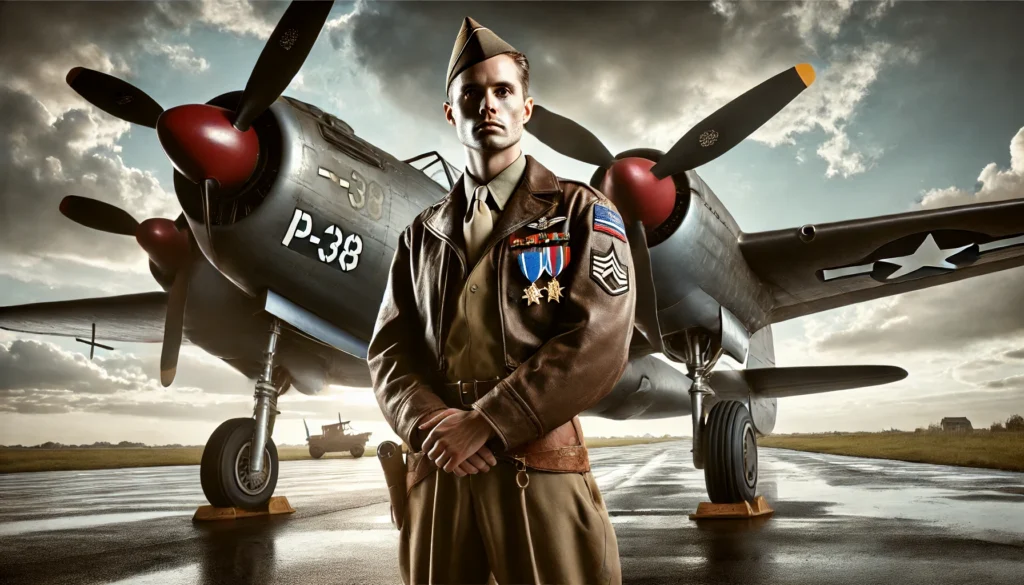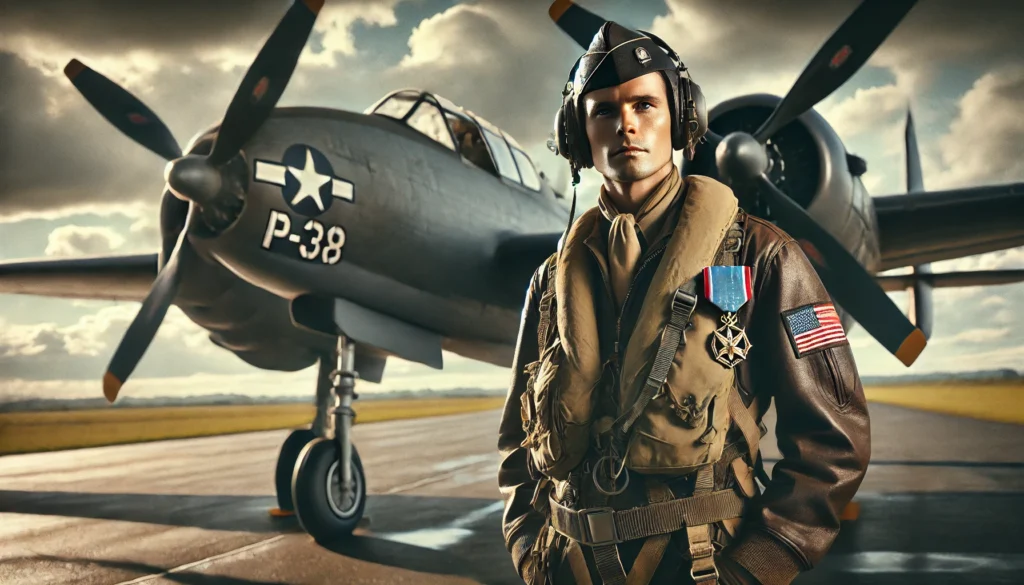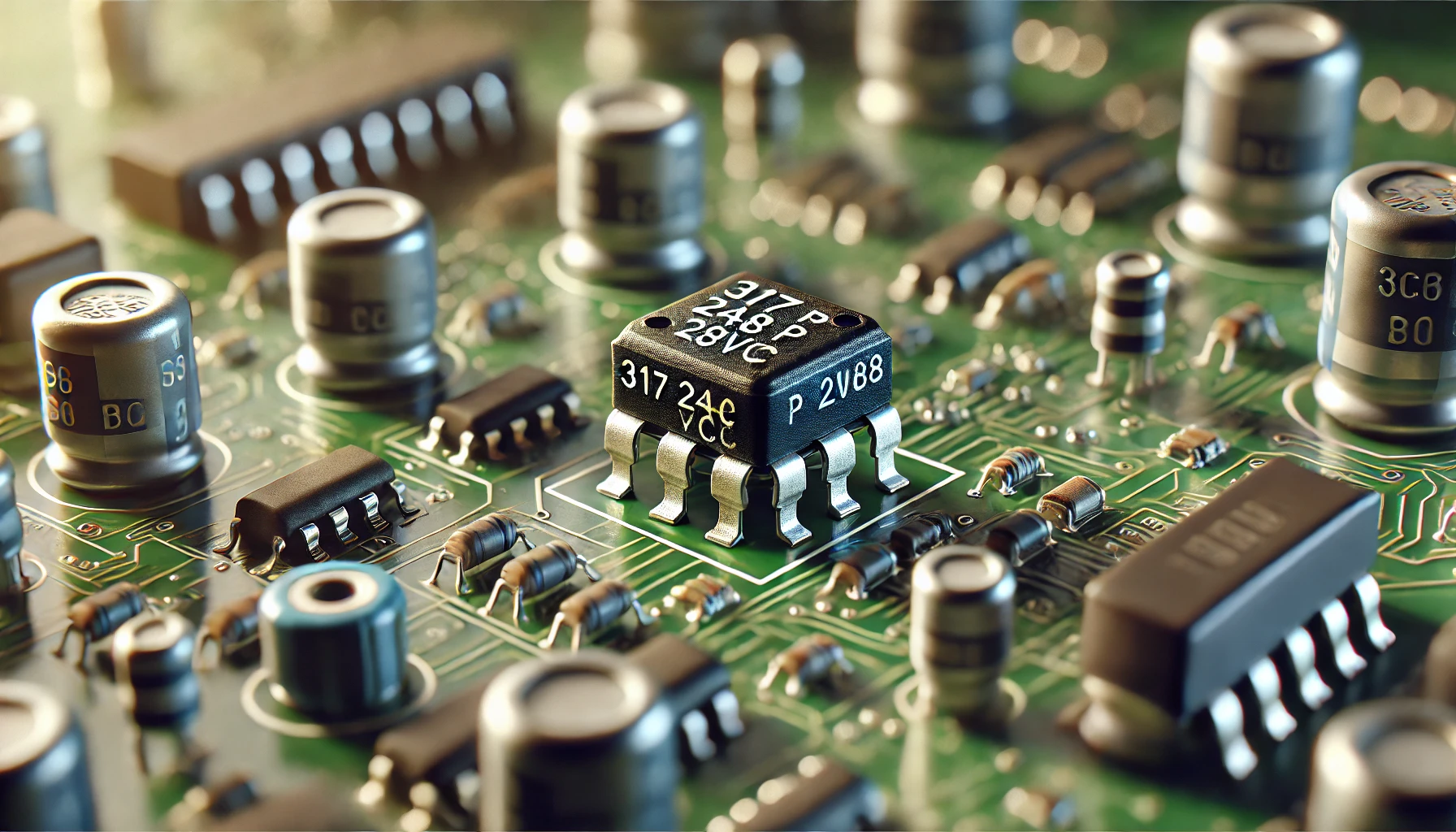Who are the P-38 Lightning Pilots with the CMH?
The p-38 lightning pilot cmh, one of World War II’s iconic fighter aircraft, was piloted by an elite group who had both skill and guts. But some of these pilots went beyond even that, earning the highest military honor, the Congressional Medal of Honor (CMH). Imagine being one of those pilots: trained to fly a fast, powerful plane and to keep a steady hand under enemy fire. It’s no wonder that anyone who flew the P-38 Lightning and earned the CMH is remembered for their courage.
Why the p-38 lightning pilot cmh was Special
What Made the P-38 So Different?
The p-38 lightning pilot cmh wasn’t just any fighter aircraft. With its distinctive twin-boom design and central cockpit, this plane looked like nothing else in the sky. It could fly faster, higher, and further than many other planes, making it ideal for reconnaissance, long-range bombing, and dogfights.
The P-38 was designed to be powerful, able to take on just about any mission. A pilot flying a p-38 lightning pilot cmh had to be sharp and quick on their feet. These pilots handled missions from intercepting enemy fighters to protecting bombers, and in some cases, even going on daring rescue missions.
Earning the Congressional Medal of Honor
What Does It Take to Earn the CMH?
The Congressional Medal of Honor is awarded only to those who show incredible bravery and leadership under life-threatening circumstances. For a p-38 lightning pilot cmh, it meant going far beyond what anyone could expect in combat. Imagine flying into enemy territory, knowing your life is on the line, and still staying focused enough to complete the mission and bring your aircraft—and yourself—back safely.
For example, take Thomas B. McGuire, Jr., one of the top American fighter aces of World War II. Flying a p-38 lightning pilot cmh, McGuire conducted a series of missions that showcased his flying skill and sheer bravery. In one famous instance, he risked his life to protect his fellow pilots, refusing to leave until they were safe. This kind of commitment is what the CMH stands for, and it’s what set McGuire apart.

The P-38 Lightning Pilot’s Day-to-Day Challenges
Facing the Risks
Flying a p-38 lightning pilot cmh was not just about taking off, completing a mission, and landing. It involved precise coordination, strong nerves, and readiness for anything that could come up. Pilots faced multiple threats:
- Enemy Fighters: Every mission meant a risk of being intercepted by enemy planes. Pilots had to react in a split second.
- Mechanical Failure: The P-38, although reliable, wasn’t immune to breakdowns. One mechanical issue could mean the end of a mission, or worse.
- Weather: The weather could shift fast, and pilots had to be prepared to fly through storms or heavy winds without the advanced navigation we have today.
Each flight tested a pilot’s courage, and many P-38 pilots learned to keep cool, even with everything on the line.
The Legacy of the p-38 lightning pilot cmh
How Do We Remember These Pilots Today?
Many P-38 pilots with the CMH made their mark on military history, and their stories still inspire people. Their accomplishments remind us of a time when flying was anything but certain, and when bravery often meant life or death. To honor these pilots, several memorials, books, and even museum exhibits, like those found at the National Museum of the United States Air Force, showcase their achievements.
These pilots left behind lessons on courage and dedication, qualities that resonate beyond the battlefield. For modern audiences, hearing about these pilots serves as a reminder of what true commitment looks like.
FAQs: The p-38 lightning pilot cmh and Its CMH Pilots
Q: What is the p-38 lightning pilot cmh?
A: The p-38 lightning pilot cmh was a World War II American fighter aircraft known for its twin-boom design, high speed, and versatility. It could perform various missions, from long-range bombing to reconnaissance and dogfights.
Q: Why did some P-38 pilots earn the Congressional Medal of Honor?
A: The CMH is awarded for exceptional acts of bravery and heroism. Some P-38 pilots went above and beyond in their missions, often risking their lives to save others or to complete nearly impossible objectives under heavy enemy fire.
Q: How did the P-38 compare to other aircraft at the time?
A: The P-38 was faster, could fly higher and further, and had better firepower than many other fighters of its era. It also had a unique design that gave it an edge in maneuverability and versatility on different types of missions.
Q: Are there any surviving P-38 pilots who earned the CMH?
A: Many of the P-38 pilots who earned the CMH served in the 1940s, and few are alive today. However, their legacy lives on through memorials, historical accounts, and museums.

Q: Where can I learn more about P-38 pilots and the CMH?
A: Many military museums, including the National Museum of the United States Air Force and the Smithsonian National Air and Space Museum, have exhibits on P-38 pilots and the Congressional Medal of Honor. Online resources also provide detailed information on these pilots and their incredible stories.
Final Thoughts on p-38 lightning pilot cmh
p-38 lightning pilot cmh pilots who earned the Congressional Medal of Honor aren’t just names in history books—they are real-life heroes who pushed the limits of what’s possible in combat. They faced down enemy fighters, battled technical challenges, and emerged as legends.
In remembering the P-38 Lightning pilot with the CMH, we keep their courage alive, honoring a time when every mission held the weight of history.












